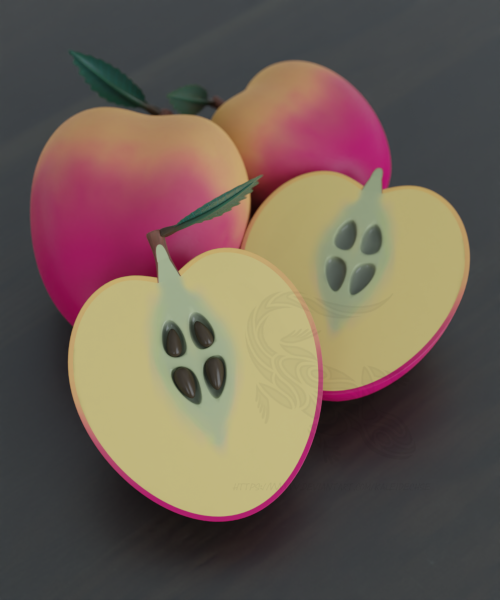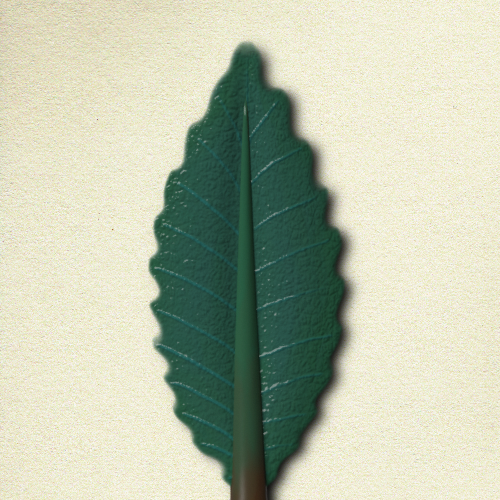Anlómanol
A tree with oval fruit that are a food staple in the Nimýric culture.
Basic Information
Anatomy
The broadleaf tree has a near-spherical top. Its trunk is rather slim, tall and splits several times before the fruit-bearing branches form.
Said branches are long and lined with bluish-green oval leaves that show numerous indentations along their edges. The bark is coarse and reddish brown.
Anlóma fruits are oval, rounder at the top and more pointed at the bottom. They have a velvety surface with colors ranging from a warm yellow to a dark pink.
Genetics and Reproduction
The tree sports bright pink blossoms in spring. They are pollinated by insects, mostly póané which collect nectar to feed their hives. During the summer months, the petals are shed and a fruit grows from what remains of the blossom. It ripens until early autumn when the fruit is either harvested or breaks off the branch naturally.
Growth Rate & Stages
Anlómanolé only start blossoming about three years after the seed germinated. By that time, the tree is typically as tall as an adult Ichtýd. The resulting fruits are still very small at that point.
Five years later, the tree has reached a height between 5 and 7 meters and produces fruits of the final size. Its growth will slow down from that point onwards. While trees taller than 14 meters are not unheard of, those are rare and always very old.
Ecology and Habitats
The trees prefer a subtropical climate with warm temperatures, moderate levels of humidity and a lot of natural light.
Over the centuries, the Nimýrité have also created a few subspecies which tolerate cooler temperatures and grow further north or south.
Additional Information
Domestication
Cultivating these fruit trees is a practice about as old as the Nimýric civilization. The sweet, spongy anlómané have been a food staple long before Nimýron the Benevolent was born. Consequently, the majority of anlómanolé are systematically grown in orchards. Anlóma farmers usually work together with póa keepers to ensure efficient pollination, with a suitable number of póa hives located in the middle of these orchards.
Uses, Products & Exploitation
The main product are the fruits which are used in anything from jam to pies and savory dishes, and from juice to alcoholic beverages. Additionally, the honey which the póané produce from its nectar is very popular for sweetening drinks and pastry, or simply for spreading it onto a slice of bread.
Lifespan
~ 40 - 60 years
Average Height
~ 8 - 12 meters
Average Diameter
~ 7 - 11 meters
Related Materials






Comments